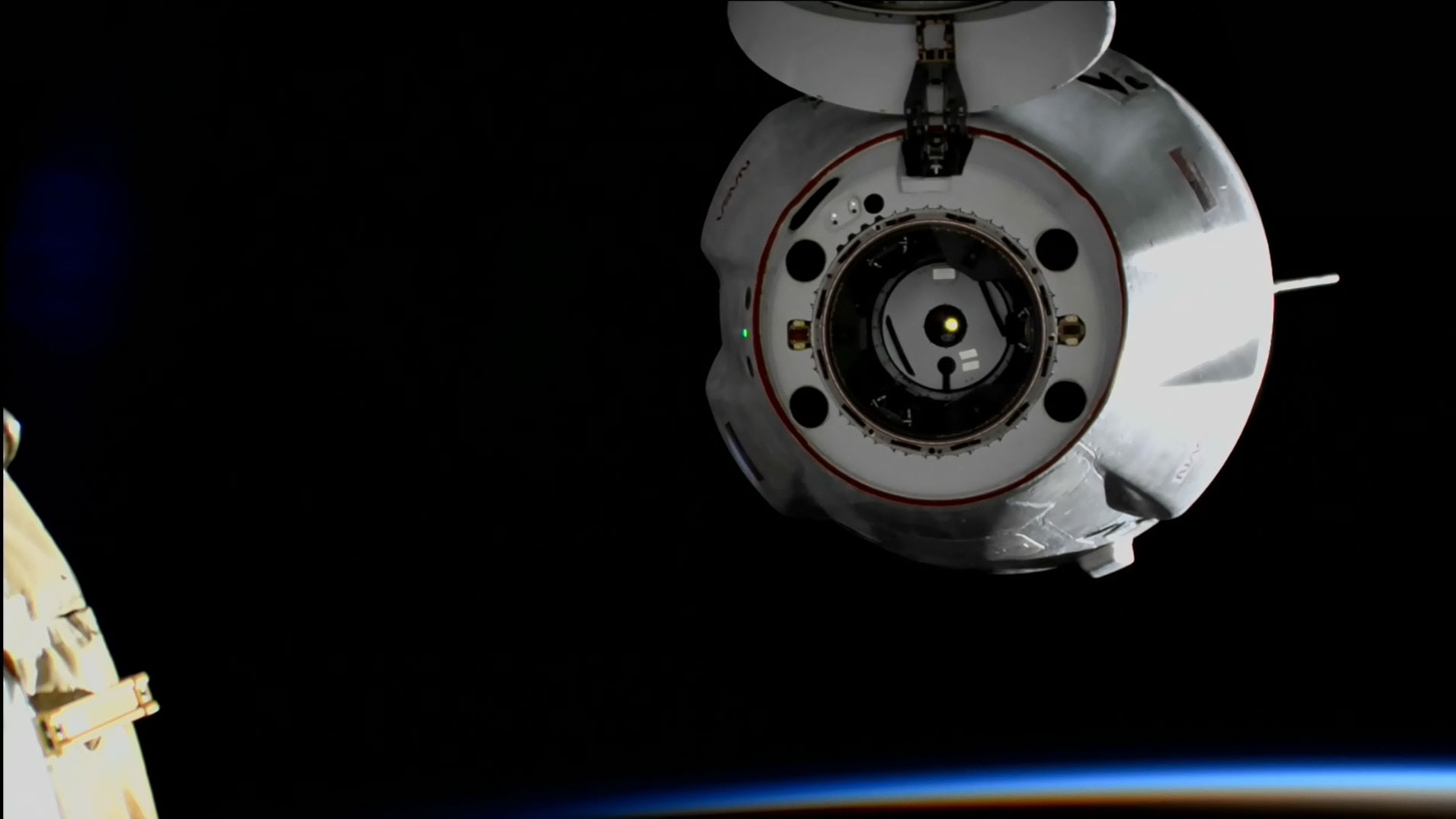
SpaceX’s 25th cargo resupply mission to the International Space Station (ISS) is in its homestretch, following a successful departure at 11:05 a.m. EDT Friday from the sprawling orbital outpost. The Cargo Dragon ship—tailnumbered “C208”—wrapped up a record-tying third visit to the ISS for a commercial vehicle and is carrying over 4,000 pounds (1,800 kilograms) of equipment, payloads and unneeded items back to Earth.
CRS-25 is expected to mark the final visiting vehicle of Expedition 67. Next month, Soyuz MS-22 will launch from Baikonur Cosmodrome in Kazakhstan and in early October Crew-5 will launch from the Kennedy Space Center (KSC) in Florida to deliver a total of seven astronauts and cosmonauts from Russia, Japan and the United States for the next increment, Expedition 68.
The Cargo Dragon took flight atop a five-times-flown Falcon 9 booster from historic Pad 39A at KSC at 8:44 p.m. EDT on 14 July. Launch was more than a month overdue, having originally been scheduled to fly in early June.
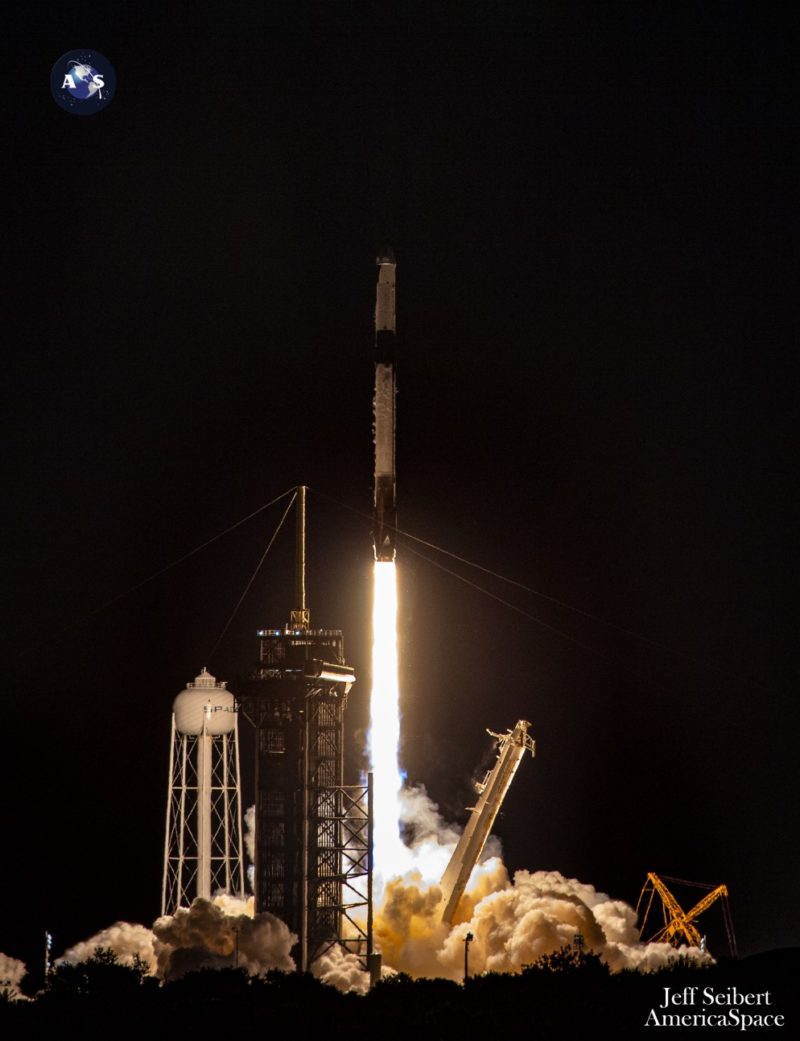
This particular Cargo Dragon (“C208”) had previously logged 71 days in space on the CRS-21 and CRS-23 cargo missions, launched in December 2020 and August 2021. During those missions, she lifted a combined 5,179 pounds (2,349 kilograms) of payloads and supplies to the Expedition 64 and Expedition 65 crews.
She becomes the fourth Cargo Dragon ship to log a third voyage to the space station. And with today’s successful departure, and tomorrow’s anticipated splashdown off the Florida Coast, she becomes the most flight-seasoned Cargo Dragon of all times, with over 108 days of on-orbit time.
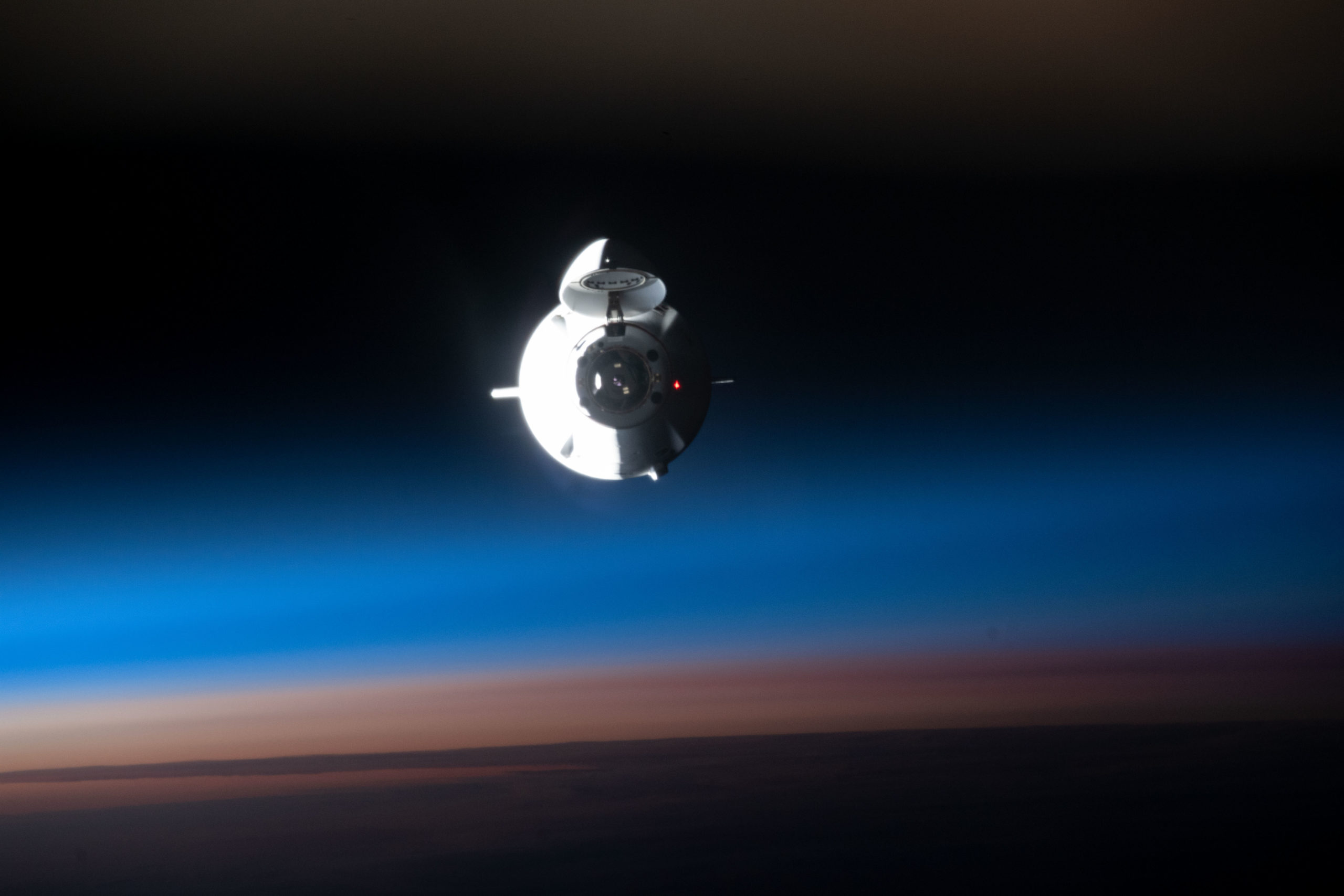
But CRS-25’s launch was postponed initially until month’s end, and later into the middle of July, in response to elevated monomethyl hydrazine vapor readings in the Draco thruster system.
Propellant and oxidizer were removed from the affected region to permit deeper investigation and testing and the enforced downtime allowed SpaceX engineers to remove and replace a thruster valve inlet joint and change out the Cargo Dragon’s parachutes as a precautionary measure.
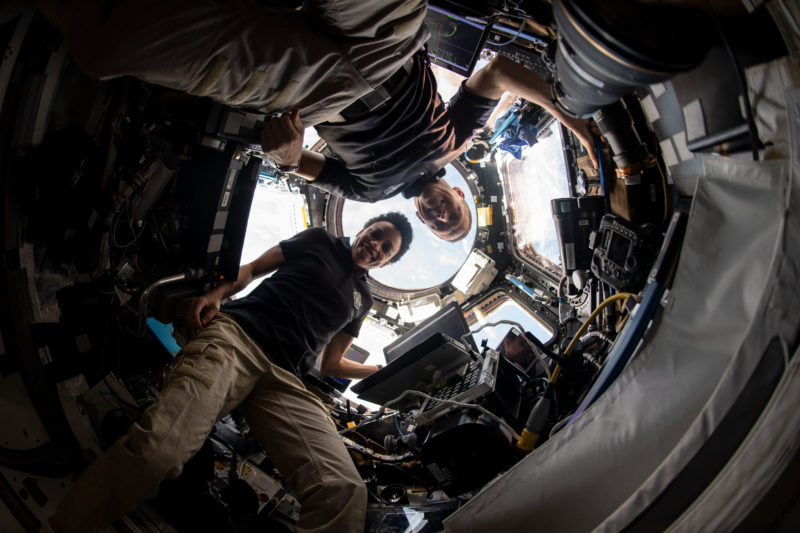
Aboard the Cargo Dragon for CRS-25 were about 5,800 pounds (2,600 kilograms) of equipment, payloads and supplies for the station’s incumbent Expedition 67 crew of Russian cosmonauts Oleg Artemyev, Denis Matveev and Sergei Korsakov, Italy’s Samantha Cristoforetti and U.S. astronauts Kjell Lindgren, Bob “Farmer” Hines and Jessica Watkins.
On 15 July, with CRS-25 in transit to the station, Lindgren, Hines and Watkins configured research hardware to accommodate the incoming scientific experiments and reviewed Cargo Dragon rendezvous and cargo operations.
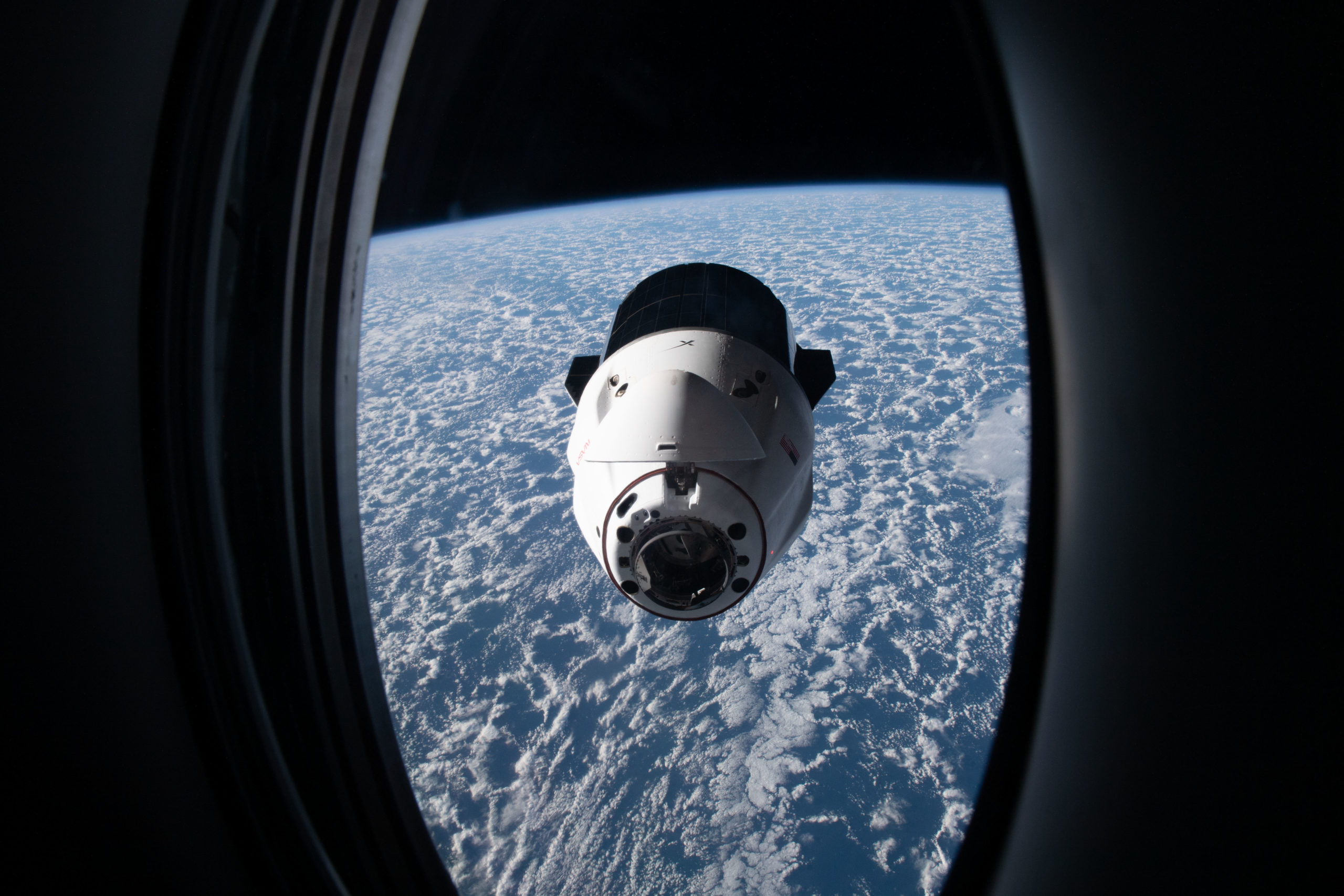
At 11:21 a.m. EDT on 16 July, the cargo ship docked autonomously at the forward-facing port of the Harmony node, as the two spacecraft flew 267 miles (429 kilometers) over the South Atlantic Ocean. Less than two hours later, following pressurization and leak checks, the hatches into CRS-25 were opened and the U.S. Operational Segment (USOS) crew swarmed aboard to begin unloading cargo.
“Here there be dragons,” tweeted Lindgren. “Welcome aboard.”
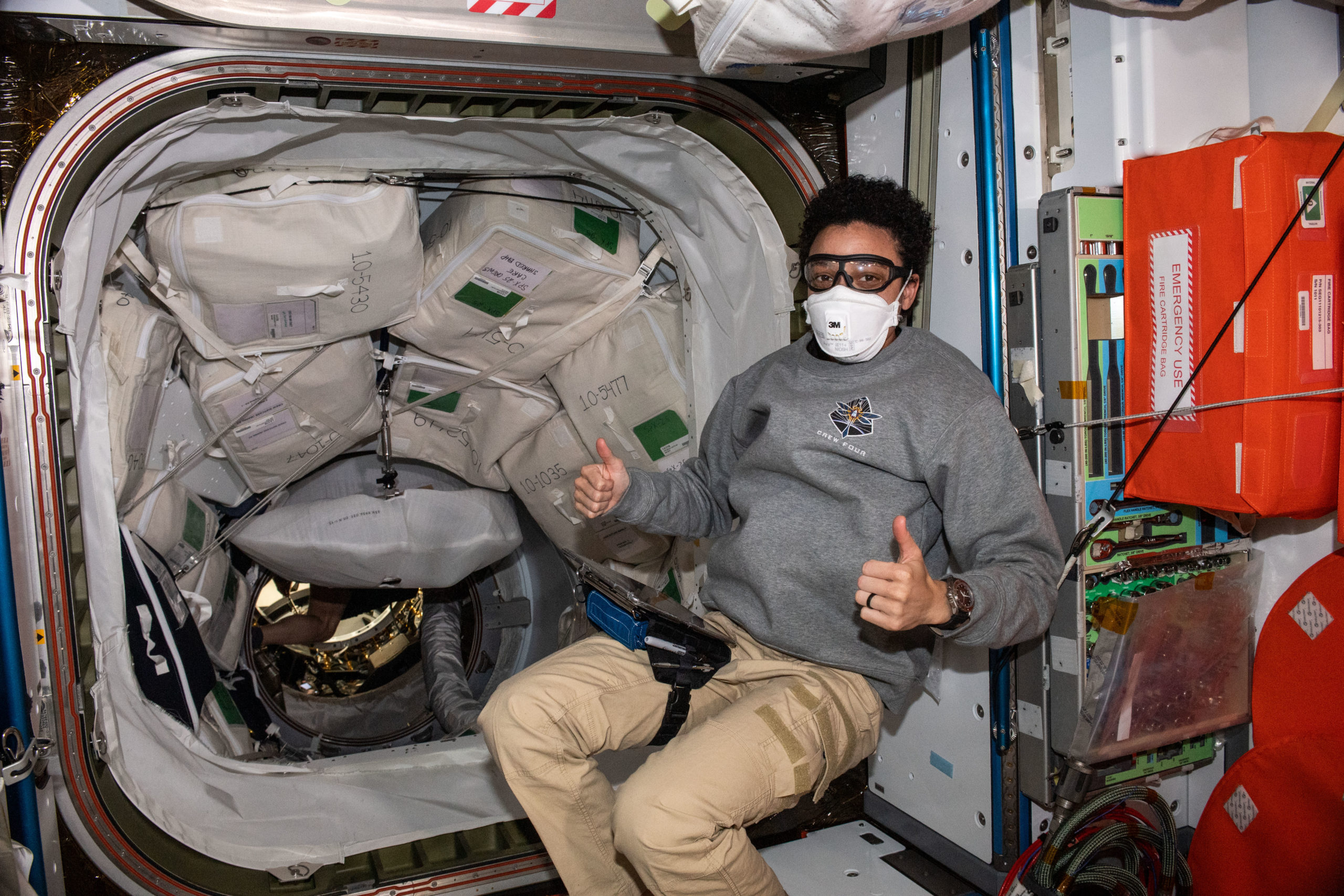
And that cargo was indeed multi-faceted in its scientific scope. It included studies of the human immune system to Earth’s oceans and from cell-free biomarkers to testing an off-planet alternate to concrete.
Leading the haul was NASA’s Earth Surface Mineral Dust Source Investigation (EMIT), which utilizes imaging spectroscopy to take over a billion measurements of the mineral constituents of dust in Earth’s most arid regions to understand their impact upon human populations. The EMIT payload, developed by the Jet Propulsion Laboratory (JPL) in Pasadena, Calif., will remain operational for about a year.
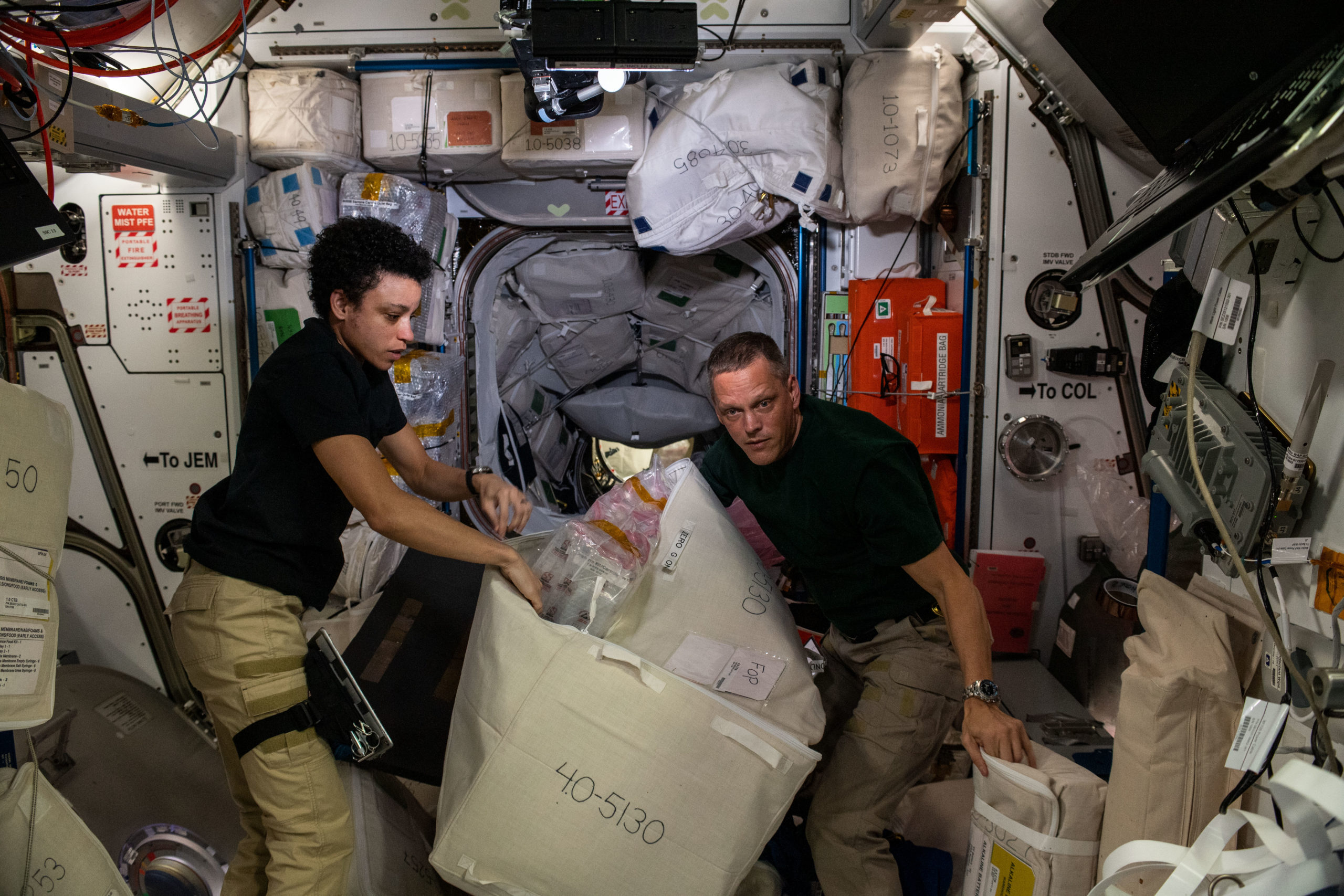
The payload and a replacement Battery Charge-Discharge Unit (BCDU) was extracted from the Cargo Dragon’s unpressurized “trunk” on 22 July, via the Canadarm2 robotic assets. It was then installed onto ExPRESS Logistics Carrier (ELC)-1 on the station’s port-side P-3 truss.
The entire process, from extraction to installation, took about 40 hours, after which EMIT was put through an extensive cool-down phase to prepare for operations. Within days, the instrument got right to work, achieving its “first light” over Western Australia on 27 July.
Elsewhere, the Immunosenescence investigation employed tissue “chips”—human cells in a three-dimensional structure—to examine the effect of microgravity upon immune-system functionality during spaceflight and their ability to recover after returning home. This experiment was the focus of a great deal of activity in recent weeks.
To prepare for Immunosenescence, Hines configured the Life Science Glovebox (LSG) inside Japan’s Kibo lab on 19 July and serviced tissue samples. Over the next couple weeks, Hines, Watkins and Lindgren took turns setting up samples and examining them under a microscope in the U.S. Destiny lab.
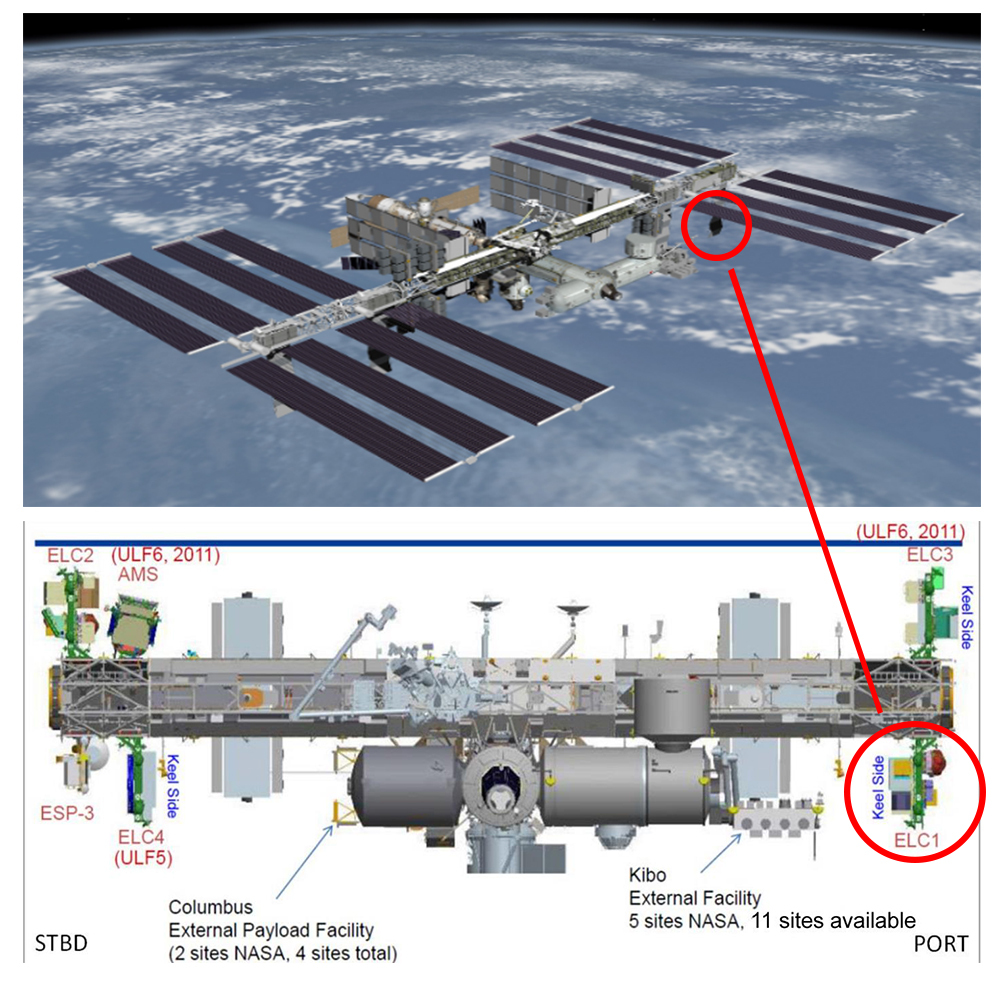
Hines also spent time working on the Genes in Space (GIS)-9 study, which seeks to utilize cell-free technology as a platform for protein production which does not include living cells. GIS-9 evaluated a pair of approaches to this technology—cell-free protein production and biosensors capable of detecting specific “target” molecules”—and carries potential future applications on Earth and in space for medical diagnostics, on-demand production of medicines and vaccines and environmental monitoring.
In addition to unloading CRS-25, on 29 July Lindgren loaded a U.S. spacesuit—Extravehicular Mobility Unit (EMU) No. 3015—back inside the Cargo Dragon, for its return to Earth for inspection. This suit met with some difficulty back in March, when German spacewalker Matthias Maurer experienced water intrusion into his helmet.
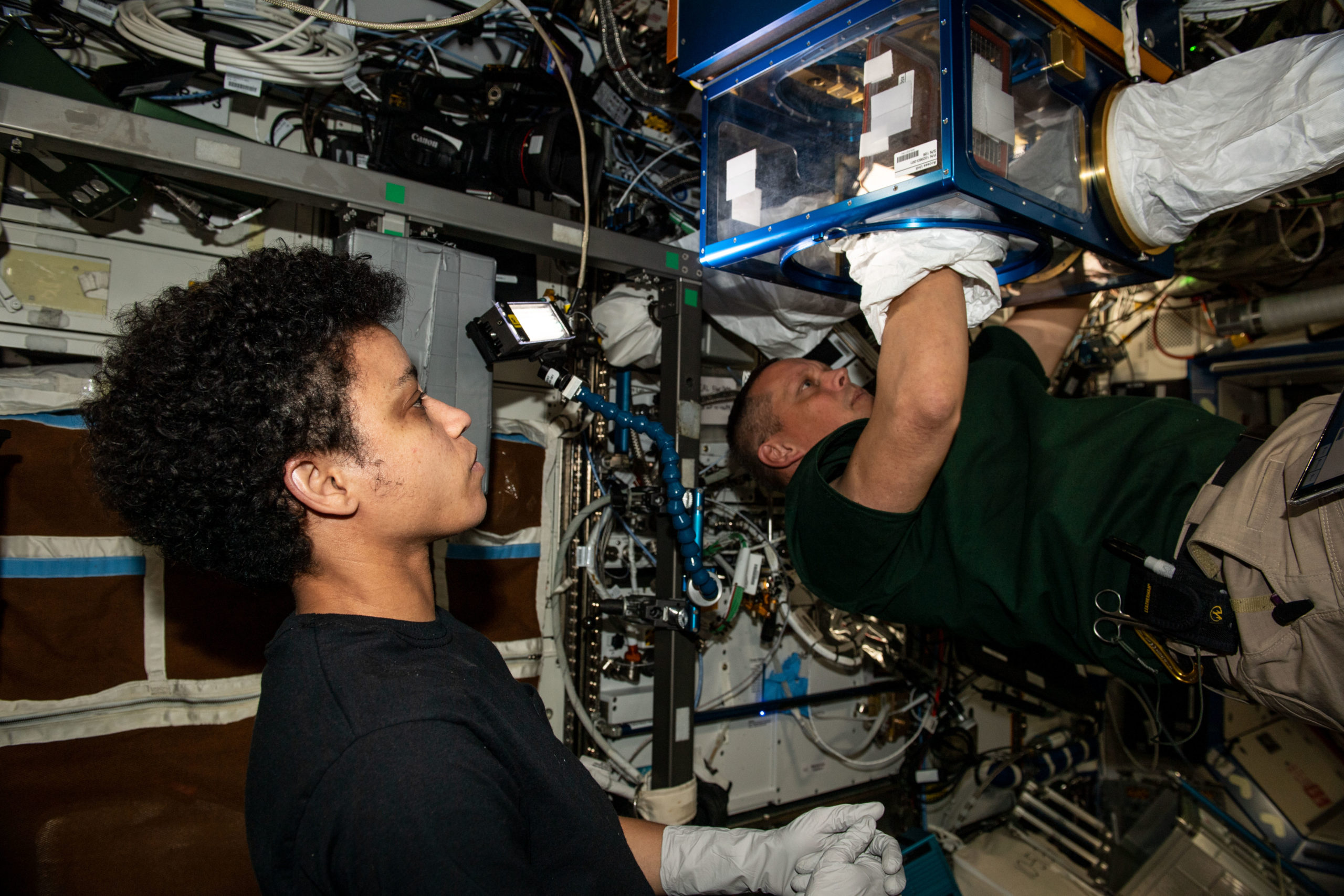
“Scheduled” U.S. spacewalks are currently on hold, pending resolution of this rather thorny problem. It is expected that engineers will require at least six weeks to examine EMU 3015 before the ISS crew can be cleared for regular Extravehicular Activity (EVA) operations. Up to four EVAs were planned for 2022, including a pair in August, but all have been deferred to no sooner than the end of the year.
As August dawned, CRS-25 research entered its homestretch, with Hines photographing GIS-9 samples and Lindgren processing Immunosenescence specimens. Joined by Watkins and Cristoforetti, they also began the laborious process of loading more than 4,000 pounds (1,800 kilograms) of cargo, ISS equipment and experiment results back inside the Cargo Dragon for its departure.
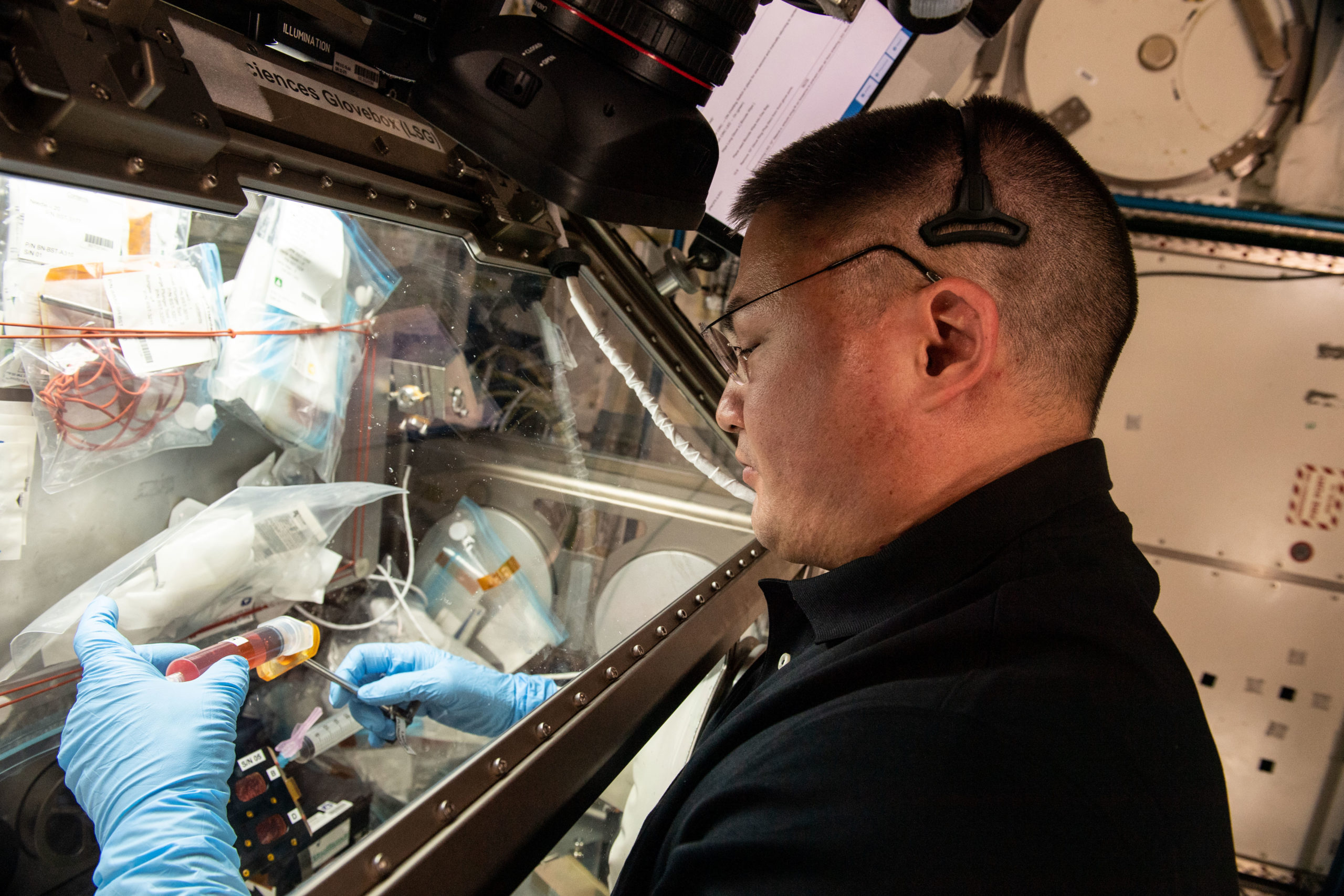
Among this homeward-bound haul are samples from the Materials International Space Station Experiments (MISSE-15), results from the Spacesuit Evaporation Rejection Flight Experiment (SERFE)—a technology demonstration which uses water evaporation to remove heat from space suits—and Europe’s Bioprint First Aid hand-held bioprinter. After a 24-hour delay due to predicted poor weather off the Florida Coast, CRS-25 undocked from Harmony’s forward port at 11:05 a.m. EDT Friday to begin its return to Earth.
Currently, the cargo ship is targeting a splashdown off the Florida Coast on Saturday, after 37 days in orbit. That will bring C208 to a cumulative 108 days of flight-time across her three missions, more than any other Cargo Dragon.
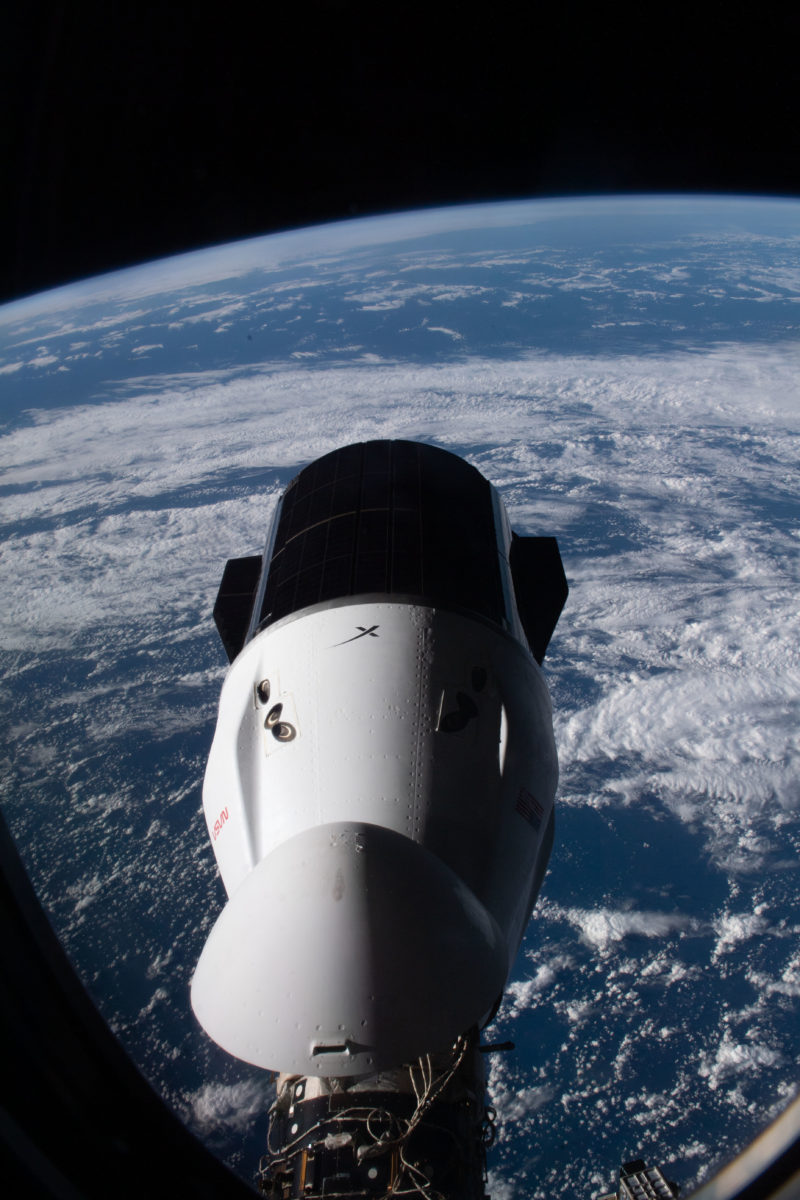
Its departure wraps up the final cargo mission of Expedition 67, whose seven-member crew are expected to rotate out of the ISS in the coming weeks to be replaced by the new Expedition 68 increment. Following last month’s long-awaited signing of a NASA/Roscosmos agreement for integrated crew operations, one U.S. astronaut will ride aboard forthcoming Russian Soyuz missions and one Russian cosmonaut will fly aboard Crew Dragon missions, to ensure continuous human presence on both the USOS and Russian Operational Segment (ROS).
Soyuz MS-22 will launch from Baikonur in Kazakhstan on 21 September, carrying Russian cosmonauts Sergei Prokopyev and Dmitri Petelin, together with NASA astronaut Frank Rubio. And in early October, Dragon Endurance—making her second flight—will launch from Pad 39A at KSC, carrying NASA astronauts Nicole Mann and Josh Cassada, Japan’s Koichi Wakata and Russian cosmonaut Anna Kikina.




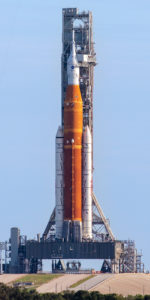
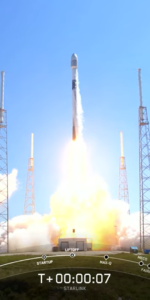
7 Comments
7 Pings & Trackbacks
Pingback:SpaceX’s Third Falcon 9 of September Launches at Sixth Attempt - AmericaSpace
Pingback:Dragon Freedom Splashes Down, Wraps Up Six-Month Crew-4 Mission - AmericaSpace
Pingback:SpaceX Logs Second Mission in Two Days, as Busy November Beckons - AmericaSpace
Pingback:First-Time Spacewalkers Prepare Ground for Next iROSA Solar Arrays - AmericaSpace
Pingback:SpaceX Launches CRS-26 Cargo Dragon, Heads for Space Station - AmericaSpace
Pingback:SpaceX Flies Twice in One Day, Aims for Third Launch on Saturday - AmericaSpace
Pingback:SpaceX Flies Twice in One Day, Aims for Third Launch on Saturday - Space News